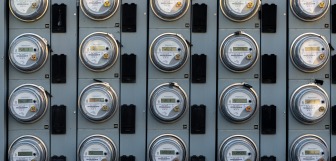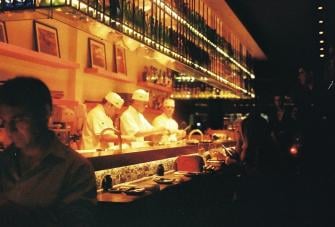Controlling utilities cost for restaurant businesses: A comprehensive guide
Hey there, restaurant owners! We know that running a restaurant is a thrilling journey filled with delicious food, happy customers, and the joy of creating memorable dining experiences. But let's get real - it's also a tough business with numerous challenges, and one of the often-overlooked hurdles is the cost of utilities. Don't worry; we've got you covered.
In this comprehensive guide, we'll dive into the world of utilities and show you how to manage these expenses efficiently. Whether you're an experienced restaurateur or just starting out, you're in for a treat!
Understanding the impact of utilities
First things first, what are we talking about when we say "utilities"? We're talking about electricity, water, natural gas, and waste management per square foot. These are the unsung heroes that keep your restaurant running. You can't cook without power, keep customers happy without water, or handle waste without a reliable disposal system. It's all interconnected.
Utilities' crucial role in restaurant operations
Now, here's the deal – utilities are absolutely vital to your restaurant's daily operations. Imagine your kitchen suddenly losing power during a busy dinner rush or running out of hot water during peak hours. That's not just a minor inconvenience; it can impact your revenue and customer satisfaction.
Operational efficiency and cost savings
Utilities don't just influence your operations; they significantly affect your bottom line. The more energy and water you use, the higher your bills climb. The money you spend on improperly managed utilities is an additional investment that could be better used in improving your menu, upgrading your restaurant's decor, or expanding your business.
Environmental responsibility
Beyond the financial aspects, there's also an ethical side to utilities. Responsible resource management is becoming increasingly important, both to meet customer expectations and to contribute to a more sustainable future. Reducing your restaurant's carbon footprint by minimizing energy consumption and water usage isn't just good for your bottom line; it's good for the planet.
So, as we embark on this utilities cost-saving journey together, remember that understanding the impact of utilities is the first step. Stay tuned as we explore energy audits, energy-efficient equipment, kitchen optimizations, and more. We're here to help you take control of your restaurant's utilities costs and make your business thrive!
Conducting an energy audit
Now that we've grasped the importance of utilities for your restaurant, it's time to roll up our sleeves and get practical. One of the most effective ways to take control of your utilities costs is by conducting an energy audit. Think of it as your restaurant's health check-up, but for its energy consumption.
Importance of energy audit
First, let's address the big question: Why should you bother with an energy audit? An energy audit helps you identify where your restaurant is using energy inefficiently and where you can make improvements. It's like shining a spotlight on those dark corners where energy dollars tend to hide.
It typically involves a thorough examination of your restaurant's energy consumption patterns. You'll scrutinize utility bills, inspect equipment, and assess your restaurant's overall energy efficiency. Let's break it down:
1.Tracking utility bills
Start by gathering your utility bills from the past year or two. Take a close look at them. Are there any unusual spikes or consistent high costs during specific months? This can provide clues about how much electricity you’re using and where your energy is going
2. On-site inspection
Next, roll up your sleeves and head into the restaurant. It's time to inspect everything from top to bottom. Check for leaks in pipes, doors or windows that let drafts in, faulty plug sockets, and inefficient lighting or appliances. Every small detail counts
3. Identify energy guzzles
During your inspection, you're likely to find some energy guzzlers lurking around. These could be outdated refrigerators, ovens that are past their prime, or lighting fixtures that are unnecessarily bright. Identifying these culprits is crucial because once you know where the problems are, you can take action to address them.
4. Benchmarking your utility costs
Benchmarking is like comparing your own restaurant's energy usage against industry standards[1]. It's a way to see how your restaurant stacks up against similar establishments. This can give you valuable insights into areas where you can improve
5. Setting energy consumption goals
With all this information in hand, you can start setting goals for energy savings. Maybe you aim to reduce energy consumption by 20% over the next year. These goals will serve as your roadmap to a more efficient and cost-effective restaurant.
An energy audit isn't a one-and-done deal. It's a process that you can repeat periodically to track your progress. The beauty of this process is that as you make improvements and see the savings on your bills, you'll gain confidence in your ability to manage utilities costs effectively.
So, don't be daunted by the prospect of an energy audit. It's your first step towards a leaner, more efficient, and more profitable restaurant. Stick with us on this journey as we explore more ways to take control of your restaurant's utilities costs!
Energy-saving appliances and equipment
Alright, folks, if we're talking about taking control of your restaurant's utility costs, it's time to dive into one of the most exciting parts – upgrading to energy-efficient equipment and appliances. Think of this as giving your restaurant a high-tech makeover while saving you some serious cash.
So, why should you bother swapping out your trusty but old equipment for energy-efficient versions? Besides the fact that they're much more environmentally friendly, energy-efficient appliances can significantly slash your utility bills. They're like the hybrid cars of the culinary world – they get the job done while sipping less energy.
Understanding energy star ratings
You know those Energy Star labels you see on appliances? Those are your best friends when it comes to selecting energy-efficient equipment. Energy Star is like the gold standard for energy efficiency. These ratings tell you just how much energy an appliance uses compared to standard models. The lower the number, the more efficient the appliance. Let's explore how these stars effect different pieces of equipment one by one:
Kitchen equipment
Let's talk kitchen gadgets, shall we? Your ovens, refrigerators, dishwashers, and stovetops are some of the most energy-hungry machines in your restaurant space. Replacing them with energy-efficient models can lead to significant savings. Plus, newer equipment often comes with added features like better temperature control and timers, making it easier for your kitchen staff to work their culinary magic.
LED lights to lower energy costs
Lighting may seem like a minor worry, but it adds up, especially in a restaurant. Swap out those old incandescent bulbs for LED lights. Not only do they last longer, but they also use way less electricity. Plus, you can get LED lights in various color temperatures to set the perfect ambiance for your diners.
HVAC system
Heating, ventilation, and air conditioning (HVAC) systems are the unsung heroes of a comfortable dining experience. But they can also be energy hogs if not properly managed. Consider investing in energy-efficient HVAC systems with smart thermostats. These can adapt to the environment, ensuring your customers are cozy without wasting energy.
Now, here's a pro tip – no matter how energy-efficient your equipment is, it won't stay that way if you don't take care of it. Regular maintenance is key to keeping your appliances running at peak efficiency. Clogged vents, dirty filters, and worn-out gaskets can all lead to energy waste.
Remember, it's not just about saving money; it's about reducing your environmental footprint and giving your customers a more sustainable dining experience. So, when it's time to upgrade your kitchen, think energy-efficient, and watch those utility bills shrink while you continue to serve up culinary delights. Stick with us as we explore more ways to make your restaurant more efficient and profitable!
Optimizing kitchen workflow for reduced restaurant utility costs
Now it’s time to dive into the heart of your restaurant – the kitchen. This is where the magic happens, and also where a lot of energy and money can disappear into thin air. Let's talk about how to streamline your kitchen operations for maximum efficiency and minimum utilities costs.
Efficient kitchen layouts
First up, consider your kitchen's layout and design. Does it flow smoothly, or do your chefs have to do a marathon to get from the prep station to the stove? An efficient kitchen layout minimizes wasted steps and energy. It also helps maintain a comfortable temperature by strategically placing hot and cold areas.
TOP TIP: Look at our ghost kitchen blog to learn all the benefits of this type of kitchen design!
Timing and coordination strategies to reduce labor costs and food costs
In the restaurant world, timing is crucial. Encourage your kitchen staff to communicate effectively, ensuring that they're only firing up equipment when it's needed. For example, if your kitchen opens for lunch and dinner, don't keep everything running in between. Turn off equipment during downtime to conserve energy . This way, you can reduce food expenses and even minimize labor costs
TOP TIP: Invest into a smart restaurant POS system to take orders seamlessly while deducting inventory in real time as you take orders to the kitchen!
Leveraging smart kitchen equipment for energy savings
Modern technology offers a helping hand in energy efficiency. Explore the world of smart kitchen equipment and how it can adapt to your restaurant's demands, effectively lowering utilities costs. Some include:
- Kitchen display system: This innovative software allows you to synchronize your front and back of house with a kitchen screen system.
- Epos Now Order & Pay: It allows you to manage all your restaurant orders, delivery and collections from one place.
- Epos Now Online Ordering: This amazing integration is great for those who don't fancy leaving their houses and prefer to cater your menu items from the comfort of their sofas. Suitable for take-out, delivery and pre-order! Also great to minimize payment processing fees from different third parties.
Proactive maintenance as a restaurant owner
We can't stress this enough: maintenance is your kitchen's best friend. Regularly cleaning and servicing your kitchen equipment not only extends their lifespan but also keeps them running efficiently. It's like giving your culinary performers a good night's sleep to ensure they're at their best every day.
Staff training for energy-efficient kitchen practices
Your kitchen staff are the stars of the show, so their practices matter. Train them to use equipment efficiently. Encourage them to turn off appliances when not in use and to be mindful of energy consumption. Sometimes, it's the little things that make a big difference.
Ready to revolutionize your restaurant's utilities management? 🚀
Water conservation strategies for restaurant utilities cost
In the restaurant world, water is not only a vital ingredient for preparing your delicious dishes but also a significant utility cost. However, there are ways to manage and reduce your water consumption without compromising on the quality of your food or service. Let's explore some effective water conservation strategies.
1. Low-flow fixtures
Upgrading to low-flow faucets and pre-rinse spray valves in your kitchen and low-flow toilets and urinals in restrooms can significantly reduce water usage. These fixtures are designed to maintain water pressure while using significantly less water than traditional ones. Plus, they can often pay for themselves in water bill savings over time.
2. Regular maintenance of your pipes
Water leaks can be silent culprits when it comes to excessive water usage. Conduct routine checks for leaks in pipes, faucets, and toilets. A dripping faucet may seem minor, but over time, it can waste a surprising amount of water and money. Promptly fixing leaks should be a top priority
3. Efficient dishwashing practices
In a restaurant, dishwashing can be a water-intensive task. Train your staff to scrape food scraps from plates before washing, and use a high-efficiency dishwasher. Consider investing in a dishwasher with adjustable settings so you can choose the most water-efficient cycle for different loads.
4. Responsible ice machine usage
Ice machines can be water guzzlers. Ensure your ice machine is regularly maintained to prevent water waste due to leaks. Additionally, consider turning off the ice machine during off-peak hours or when the restaurant is closed to save water.
5. Monitor and set targets
Implement a monitoring system for water usage in your restaurant. Set benchmarks and targets for reducing water consumption. Regularly track your water bills and compare them to your targets. This practice not only helps you identify areas for improvement but also motivates your staff to be mindful of water usage.
6. Educate and involve your staff
Your kitchen and waitstaff are on the front lines of water conservation. Educate them about the importance of water conservation and involve them in the process. Encourage them to report any leaks or wasteful practices they come across. Consider implementing a reward system to incentivize water-saving ideas.
7. Greywater systems and recycling
If regulations in your area permit, explore the possibility of installing greywater systems that reuse water from sinks and dishwashers for non-potable purposes like irrigation. Recycling water can be a sustainable way to reduce your restaurant's water footprint.
TOP TIP: Read our blog on restaurant waste and learn more about how to reduce it efficiently whilst providing top-notch quality food!
By implementing these water conservation strategies, your restaurant can significantly reduce its water usage and, in turn, lower water bills. Not only will you save money, but you'll also demonstrate your commitment to sustainability, which can be a selling point for environmentally-conscious customers. Remember, every drop saved is a step towards a more efficient and eco-friendly restaurant operation.
In conclusion, managing utilities cost for your restaurant is an ongoing effort that requires a combination of strategies, technology, and staff engagement. By understanding the impact of utilities, conducting energy audits, investing in energy-efficient equipment, optimizing kitchen workflows, and implementing water conservation and waste management practices, you can significantly reduce your restaurant's utilities expenses.
Every dollar saved on utilities goes directly to your bottom line, contributing to the long-term success of your business. Take action today and start controlling your restaurant's utilities costs for a more profitable tomorrow.
Discover the Power of EPOS Now POS Systems! 🍽️ Click here to learn more and take control of your restaurant's efficiency and profitability today! 💪🌟




